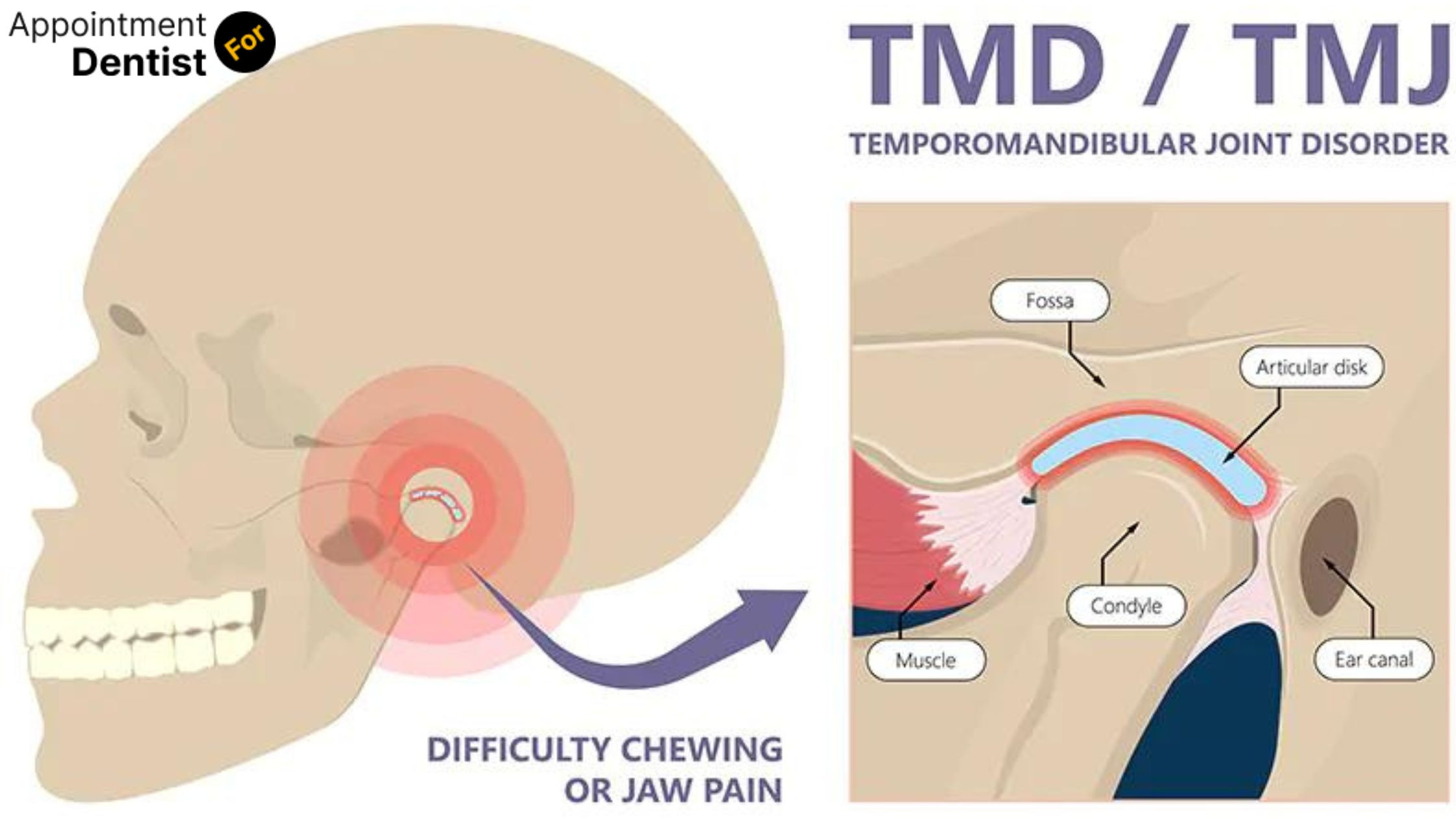What You Need to Know About Temporomandibular Joint Disorder (TMJ)
Posted on July 18, 2024 by Admin

Temporomandibular Joint Disorder, commonly abbreviated as TMJ, refers to a group of conditions that affect the temporomandibular joint (TMJ), muscles surrounding the jaw, and facial nerves. Understanding the causes, symptoms, diagnosis, and treatment options for TMJ is crucial for managing this condition effectively.
Understanding TMJ
TMJ disorder occurs when there is a problem with the muscles and jaw joints that control the movement of your jaw.
Causes of TMJ Disorder
The exact cause of TMJ disorder is often difficult to determine, as it can result from a combination of factors. Some common causes and risk factors include:
- Jaw Injury: A blow to the jaw or whiplash injury that affects the temporomandibular joint.
- Teeth Grinding (Bruxism): Clenching or grinding teeth, which puts excessive pressure on the TMJ.
- Stress: Emotional or psychological stress that causes individuals to tighten facial and jaw muscles.
- Poor Posture: Poor posture that strains the muscles of the neck and face, affecting TMJ function.
Symptoms of TMJ Disorder
TMJ disorder can manifest with a wide range of symptoms, which may vary in severity from person to person. Common symptoms include:
- Pain or tenderness in the jaw joint area.
- Difficulty or pain while chewing.
- Facial pain or pain around the ears.
- Headaches or migraines.
- Earaches not caused by an ear infection
Also Read: Things You Should Know About Dental Insurance
Diagnosis of TMJ Disorder
Diagnosing TMJ disorder typically involves a thorough examination by a dentist or healthcare professional. This may include:
- Medical History: Detailed discussion of symptoms, past injuries, and any habits like teeth grinding.
- Physical Examination: Examination of the jaw joint for tenderness, clicking, popping, or locking.
- Imaging: X-rays, CT scans, or MRI scans may be used to get a detailed view of the TMJ and surrounding structures.
Treatment Options for TMJ Disorder
Treatment for TMJ disorder depends on the severity and specific symptoms experienced by the individual. Common treatment options include:
- Self-care and Lifestyle Changes: Techniques such as applying ice packs, eating soft foods, avoiding extreme jaw movements, and practicing stress-reduction techniques.
- Medications: Pain relievers, anti-inflammatories, or muscle relaxants may be prescribed to alleviate pain and reduce muscle tension.
- Physical Therapy: Exercises to stretch and strengthen the jaw muscles, as well as techniques to improve jaw movement and posture.
- Dental Treatments: Dental treatments such as orthodontics to correct bite alignment issues, or dental splints (occlusal splints or night guards) to prevent teeth grinding.
- Surgery: In severe cases, surgery may be considered to repair or replace the TMJ joint.

Prevention of TMJ Disorder
While not all cases of TMJ disorder can be prevented, there are steps individuals can take to reduce their risk or alleviate symptoms:
- Practice Good Posture: Maintain good posture to reduce strain on your neck and facial muscles.
- Avoid Teeth Grinding: Wear a mouthguard at night if you grind your teeth.
- Reduce Stress: Practice stress management techniques such as relaxation exercises or meditation.
- Limit Jaw Strain: Avoid excessive chewing of gum and tough foods that strain the jaw muscles.
Also Read: Are Clear Aligners Better Than Braces?
Living with TMJ Disorder
Living with TMJ disorder can be challenging, but with proper management and treatment, many individuals can find relief from their symptoms.
Conclusion
Temporomandibular Joint Disorder (TMJ) can significantly impact quality of life due to its painful symptoms and effects on daily activities. By understanding the causes, recognizing the symptoms, seeking timely diagnosis, and exploring appropriate treatment options, individuals can effectively manage TMJ disorder and improve their overall oral health and well-being.Early intervention can help prevent the progression of symptoms and improve your quality of life.
Faqs
-
1. What causes TMJ disorder?
TMJ disorder can be caused by various factors including jaw injury, teeth grinding (bruxism), arthritis affecting the jaw joint, stress leading to jaw muscle tension, and poor posture.
-
2. What are the symptoms of TMJ disorder?
Symptoms of TMJ disorder include jaw pain or tenderness, difficulty chewing, facial pain, clicking or popping sounds when moving the jaw, jaw locking, headaches, and earaches not related to ear infections.
-
3. How is TMJ disorder diagnosed?
TMJ disorder is diagnosed through a physical examination of the jaw joint, assessment of symptoms, and sometimes imaging tests like X-rays, CT scans, or MRI scans to visualize the joint and surrounding structures.
-
4. What treatments are available for TMJ disorder?
Treatment options for TMJ disorder include self-care measures like applying ice packs and eating soft foods, medications such as pain relievers or muscle relaxants, physical therapy to improve jaw movement and reduce muscle tension, dental treatments like splints or orthodontics, and in severe cases, surgery.
-
5. Can TMJ disorder be prevented?
While not always preventable, individuals can reduce their risk of TMJ disorder by maintaining good posture, avoiding teeth grinding with a mouthguard, managing stress effectively, and practicing jaw-friendly habits like avoiding excessive chewing of gum or tough foods.
Recent Post
- The Importance of Oral Health Education for Children
- How to Choose the Right Orthodontic Treatment for Adults
- The Link Between Oral Health and Stroke Risk
- How to Address and Prevent Gum Recession
- Innovations in Dental Anesthesia: Pain-Free Procedures
- The Role of Saliva in Oral Health: Functions and Disorders
- Exploring Holistic Dentistry: What You Need to Know
- How Oral Health Affects Your Immune System
- The Benefits of Using Dental Probiotics
- Oral Health and Pregnancy: Myths and Facts